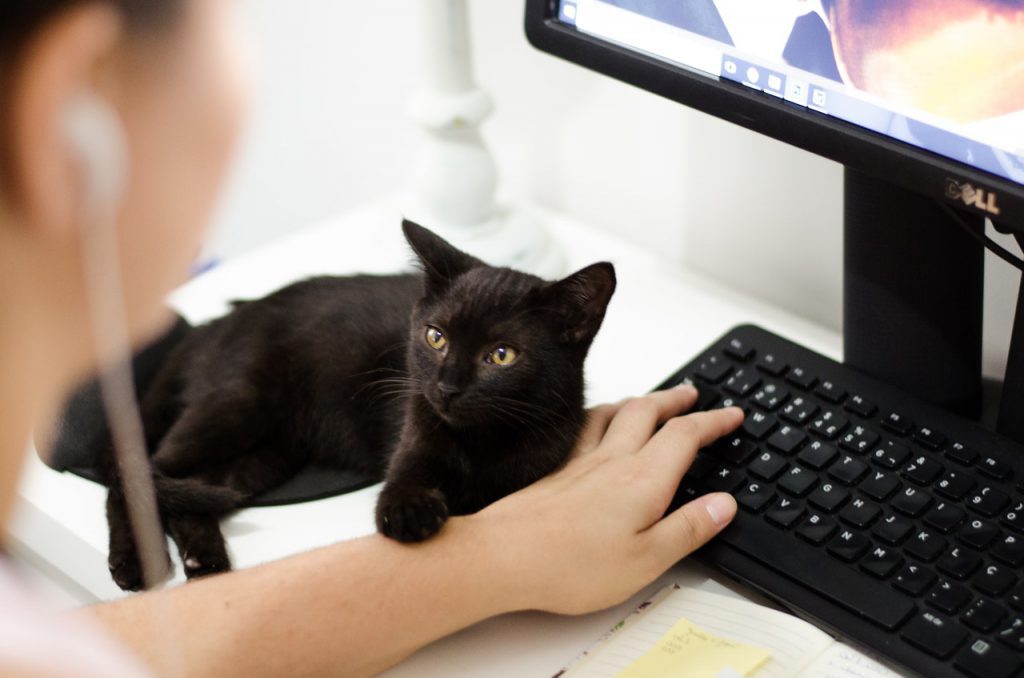Welcoming a new cat into your life can be an exciting prospect, but there’s a lot to consider before making the decision to buy or adopt your new feline companion. In this blog we’ll be looking at 9 things you need to consider before bringing a new cat or kitten into your life.
Should I buy or adopt a cat?
There is no right or wrong answer to this question – it’s down to your personal preference.
If you are looking for a particular breed of cat, it’s important to look for a reputable breeder or contact breed specific rescues if you’d like to adopt. Responsible breeders and rescues will only allow new owners to take home their new cat once it has been microchipped and given some or all their vaccinations.
Regardless of breed, if you are buying a kitten from someone, you should make sure that you see the kitten alongside its mother in its home environment. Take note of how the litter interacts with one another and also how the breeder interacts with the cats before handing any money over.
Conversely, if you choose to adopt your new cat, it can be a very rewarding experience. Most animal rescues are bursting at the seams with cats and kittens looking for loving homes. There’s a range of breeds, ages and temperaments available in animal shelters, and whilst not all of the cats will have full care history, they will have been checked over by a vet, de-wormed, vaccinated, microchipped and neutered.
Cat or Kitten?
The next thing to consider is whether you want to get a kitten or an older cat. Many cats live well into their 20’s so there’s plenty of time to love your new friend regardless of whether you get a kitten or a slightly older cat.
Kittens, although totally adorable, can take a lot of work and need more attention that you realise. They need feeding more frequently and require socialisation and training more than an older cat would.
You’ll need to treat a kitten a bit like a toddler – expect mess, destruction, lots of food but lots of joy too. Kittens need a lot of time dedicated to settling them in and letting them mature, so it’s wise to only consider getting a kitten if you have more time to spend at home with it.
Choosing a grown-up or senior cat might be the purr-fect choice for your family if you’d prefer to skip the stress of litter training and dive straight into cat ownership. By selecting a fully grown cat you can get to know what life will be like right away as their temperament is clear and unlikely to change. They’ll probably already be litter trained too and will be far happier to be left alone with some toys and a cosy bed to snooze in while you’re out.
What kind of ongoing costs will a new pet bring?
Battersea cats and dogs home estimate the cost of owning a cat at £1,500 a year. If your cat lives for 20 years, that’s a grand total of £30,000! Although some of the items mentioned in their article may only need to be brought once every so often, such as cat carriers and litter trays, the average cost of food, litter and pet insurance can be over £100 a month.
Don’t forget you’ll also need to pay for a few things such as routine vaccinations, and getting your cat spayed or neutered to avoid any unwanted feline pregnancies. This can cost upwards of £100 per cat. You’ll also need to make sure your cat is microchipped, as Microchipping your cat needs to be done by law as of 10th June 2024.
It’s important to keep your cat treated for worms and fleas too, as these pesky little parasites can cause your pet to become seriously ill if left untreated. You can treat your cat with Johnsons One Dose Wormer to protect against round worm and tapeworms and use 4Fleas Spon On to keep fleas at bay for up to 4 weeks.
Does my home suit a cat?
Regardless of whether you live in third storey apartment or in a large house with a garden, your home is likely suitable for a cat to thrive in, so long as you train them accordingly (or adopt an animal who has come from a similar environment).
Some cats need to stay indoors due to problems with their health, others may have always lived in a flat, and some just have owners that would prefer to not let them roam outdoors. If your cat is going to be an indoor only cat,it’s important to ensure it has plenty of things to occupy them such as toys, enrichment activities and comfy places to sleep. Keeping you cats litter tray topped up and clean with help to minimise accidents and making sure you aren’t over feeding them is vital to keeping your cat happy and healthy while it’s indoors.
If you decide that you are happy to let your new cat go outside, be sure to let them have a settling in period in their new environment first, before slowly introducing them to the big wide world. Cats Protection recommends 3 to 4 weeks of your cat being in its new home before introducing them outside slowly.
Regardless of whether you have an indoor only cat or one who likes to go on adventures outside, getting your house ready for your new pet is also important. You may want to move any breakables from surfaces cats can reach, secure furniture like bookshelves to walls and hide any small objects cats could eat such as paperclips or hair ties. Take a look at any house plants you may have several common ones can be toxic to cats and you may want to remove these before bringing your new feline friend home.

What do all cats need at home?
Your new cat will need a few essentials to make their life in your home a happy and heathy one.
Basics your cat needs:
- Food & water bowls
- Food
- Litter tray & cat litter
- Cat carrier
- A bed
- Toys
- Scratching post
You may also want to buy a collar for your cat with a name tag (with your name and contact details) and bell on, a cat flap if your cat is going in and out, grooming equipment and enrichment activities such as food puzzles. You could also get your cat some Catnip Spray to apply to toys and bedding, as an extra little treat for them.
How much do cats need to eat?
Every cat, just like every human, has different needs when it comes to food. Many owners feed their cats on a mix of wet and dry food, but ensuring they don’t get too much is important to help prevent possible health problems developing as a result of overfeeding.
When looking at food for your pets it is advisable to work with the manufacturer’s instructions on what to feed based on age/weight of your pet. This might be 2-3 wet food meals a day or leaving dry food out and feeding your cat wet food for more specific mealtimes. If you give your cat treats, follow the recommended portion size and adjust their main food intake if needed.
If you’re worried about your new cat’s weight, it’s best to ask your vet questions about how much food you should be giving your cat or if you’re concerned about them losing gaining/weight quickly.
Will the new cat fit in with any existing pets?
It can be hard to judge whether existing pets in the home will be OK with a new animal coming into their home, but introducing pets slowly and calmly should help to remove any stress or strain.
Cats generally prefer to live without any other cats, but that doesn’t mean they won’t accept another feline friend. Give your cats equal space, separate food, water and litter trays and slowly introduce them to each other. They may not get on but as long as they have plenty of room to pass each other and have their own things this can minimise any cat fights!
Dogs and cats can form close bonds and be lifelong cuddle buddies if they’re introduced to each other slowly and with ease. Dogs are often excitable and will need to be more relaxed, so try keeping your pooch on a lead and allowing the cat to approach them when they feel ready. For more help introducing your dog to your cat, check out Blue Cross’ blog on Introducing Dogs & Cats.
Can the new cat be around children?
Cats can be a great addition to your family and no doubt your children will be excited to welcome their new furry best friend into the home, but it’s vital that children and cats have a great relationship as this will make a harmonious home.
Every cat you encounter will be different, some cats are scared of children while others are confident and can’t wait to play with your little ones. When choosing your cat or kitten, look for particular qualities such as being inquisitive, unbothered by loud noises, curious about new people and if possible, have been around children previously.
Children also need to understand how to look after the cat and treat them with respect, like allowing them time to go to the toilet on their own or leaving them alone when eating. Growing up with a pet teaches children valuable life skills including responsibilities, empathy and improving their overall wellbeing.
Am I ready to get a cat?
The final question, are you ready to get a cat? Ask yourself if you can financially afford to bring a pet into your home, are you able to pay for insurance or cover emergency vet bills if they occur on top of their day-to-day food/litter costs.
Some other questions you may need to ask yourself:
- Do you live in a place where you can bring a cat home?
- Have you checked with your landlord/person who owns the home?
- Will the cat have plenty of room to live and play?
- Will the new cat be friendly with everyone who lives in the house already?
It is a big commitment to get a cat, but it can be a very rewarding experience if you enter into the relationship with your eyes wide open and are aware of the demands that ownership places upon you.





